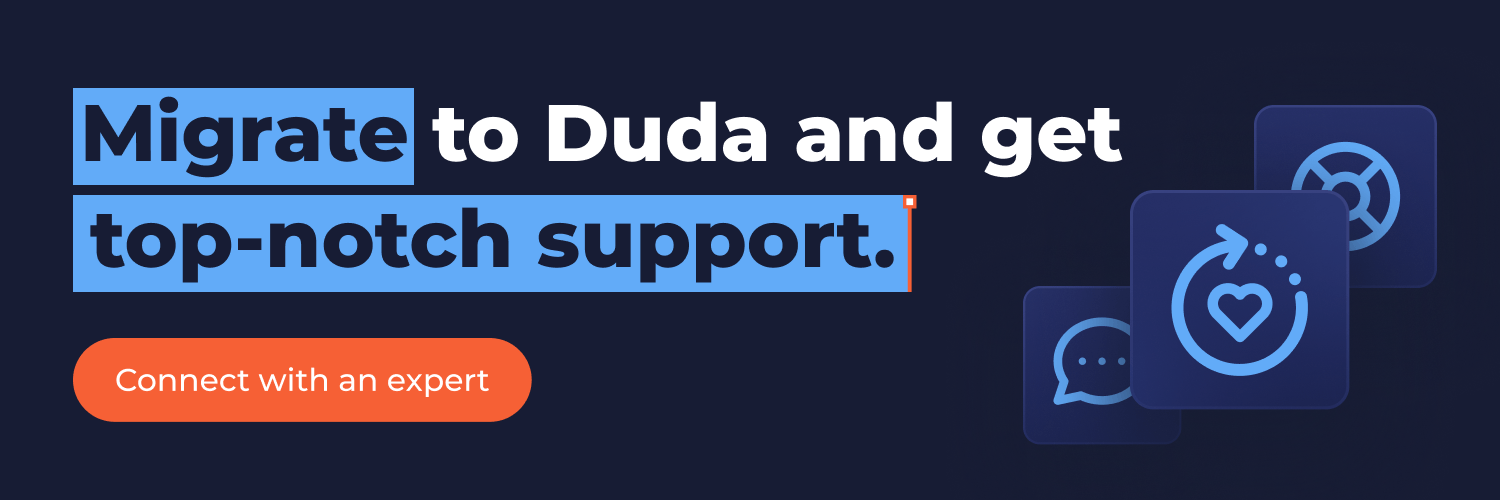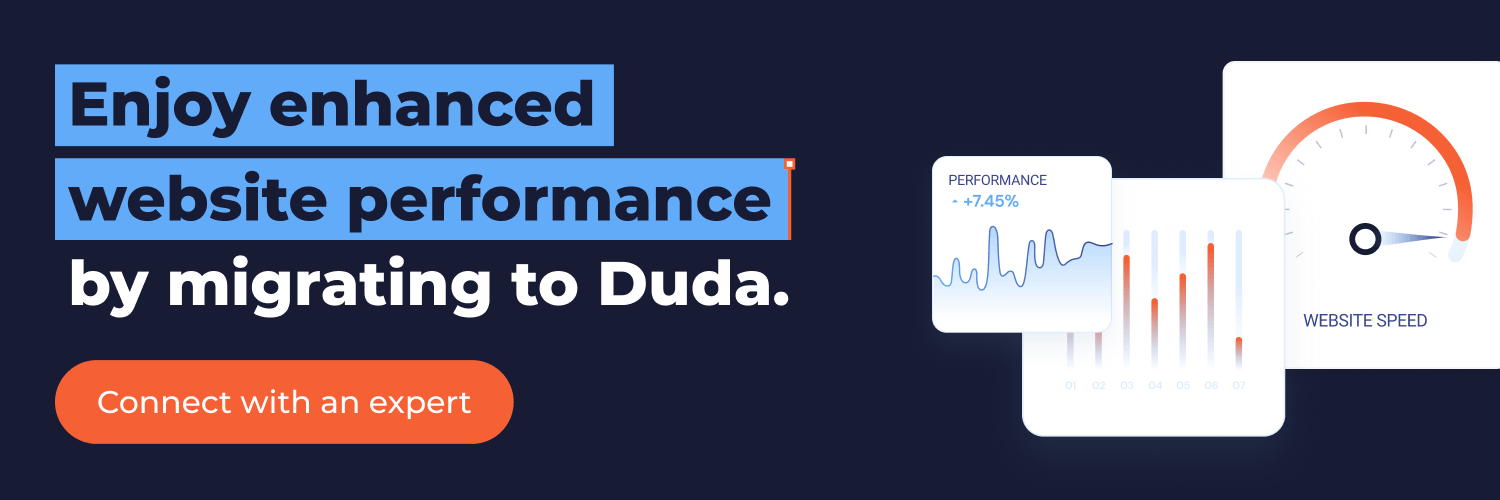When designing websites at scale for different businesses, website design and development agencies face a big decision in choosing the right website design platform to work with. When opting for something like Squarespace, you can feel stuck with the platform, but that doesn’t have to be the case. If you have clients and websites running on Squarespace, this article outlines how and why to migrate those sites to Duda. These insights are from our recent webinar on the topic of Squarespace to Duda migration with Josh Neimark of Fix8.
Fix8: A Brief Background
Josh’s agency, Fix8, used Squarespace since establishing the company with his wife back in 2010. The use of a SaaS website building platform was influenced by Josh’s approach to empowering clients with tools, design, and strategy rather than having to worry about hosting, plugins, or technical issues on their sites.
Fix8 takes on small to medium businesses from almost every vertical. The most common clients include real estate agencies, attorneys, therapists, and doctors. Fix8 partners with several different agencies—SaaS website builders enable agencies to design websites more cost-effectively through white labeling.
Fix8 remained Squarespace-centric until 2019 when the team had a meeting that flagged some issues with the platform. It turned out that the company had to turn away a lot of new business in recent times because Squarespace couldn’t perform well or support the custom design specifications of some clients. Fix8’s commitment to best practices in design meant that taking these projects on wasn’t an option because it would’ve resulted in site performance or technical issues.
The outcome from this internal meeting was that Fix8 decided the company needed another website building platform at least as an alternative to Squarespace. Having been introduced to Duda on LinkedIn, Josh opted to use Duda in 2019 as his company’s alternative design platform for more discerning clients requiring highly customized jobs.
When the Covid-19 pandemic started, Fix8 offered a special 24-month website design package. The company received an influx of new business, and this is where Duda began to shine as a website builder at scale. Even though the team at Fix8 was inundated with projects, the workload was manageable, and different Duda features began to shine through.
Reasons to Switch to Duda from Squarespace
Some of the main compelling reasons to consider switching to Duda from Squarespace include:
- More robust design capabilities: If you put any custom code on a website these days, Squarespace doesn’t provide support to resolve technical issues for clients. This leads to an element of compromising on design capabilities because there are certain things you can’t do without risking the downside of no support for clients. With Duda, you don’t need to compromise on design because the platform accomplishes a huge range of custom design capabilities out of the box.
- Website personalization: Using Duda gives clients the ability to customize the experience of the users of their websites using different parameters, such as Zipcodes, to provide customer offers and more. It’s also incredibly intuitive for clients to make edits on their Duda-based sites.
- Human support: Duda’s support team builds strong relationships with agencies and other businesses that use the platform, and they are available on the phone. This contrasts with Squarespace where the level of support you receive is less personal and doesn’t differ whether you’ve built one website or 1000 websites in Squarespace. Knowing you have a support team that has your back enables agencies to take more risks, innovate, and build bigger and better websites.
From a Fix8 perspective, Josh and his team highlighted the main benefits of Duda as:
- Migrating to Duda resulted in happier clients who were getting more customized website designs with more personalization options.
- This migration also started new recurring revenue streams for Fix8 because the company no longer had to turn away projects for which Squarespace wasn’t the right fit.
- A third major benefit has been enhanced website performance demonstrated by excellent Lighthouse scores
Get in touch and reap the benefits of migrating sites to Duda.
Factors to Consider Before Migrating to Duda
Before converting an agency to use Duda’s platform instead of Squarespace, here are some factors to consider:
Do you have a support plan in place for clients?
As you onboard clients to Duda, you’ll naturally get lots of emails and questions as clients adapt to a new platform. It’s imperative to have a support plan in place before you go through with the migration. You don’t want to end up so inundated with support queries that you can’t get any other tasks done.
The need to rebuild sites
It’s important to remember that you should rebuild sites when migrating from Squarespace to Duda. The point of moving to Duda is to improve a website, which means merely duplicating the same site from Squarespace on the Duda platform isn’t going to get the most from it in terms of improved performance and effectiveness. Duda has features that make this process more efficient, such as automatically optimizing images for the web upon upload.
Adjusted design practices
Another point not to overlook is that the freedom provided by using Duda is likely to result in your agency adjusting its design practices to more boutique, bespoke practices. Squarespace has a range of nice website templates, but they all pretty much have the same capabilities. This focus on templates results in a pre-conception of where the design is heading for clients because they’ll pick out a template and say they want their site to look like that.
Duda’s wide range of custom design capabilities means you can start to design sites more based on business-specific needs, including client demographics and other specifications outlined in a client brief. The result is more unique, beautiful websites built without the confines of a template.
There are many reasons to consider switching to Duda, and the benefits—happier clients and higher revenues—speak for themselves. Preparation is key when migrating your agency from Squarespace to Duda. If you’re prepared, you can transition smoothly and experience the kind of business transformation for your web design agency that Fix8 benefitted from.
Transform your business by switching to Duda -
Talk to our experts








